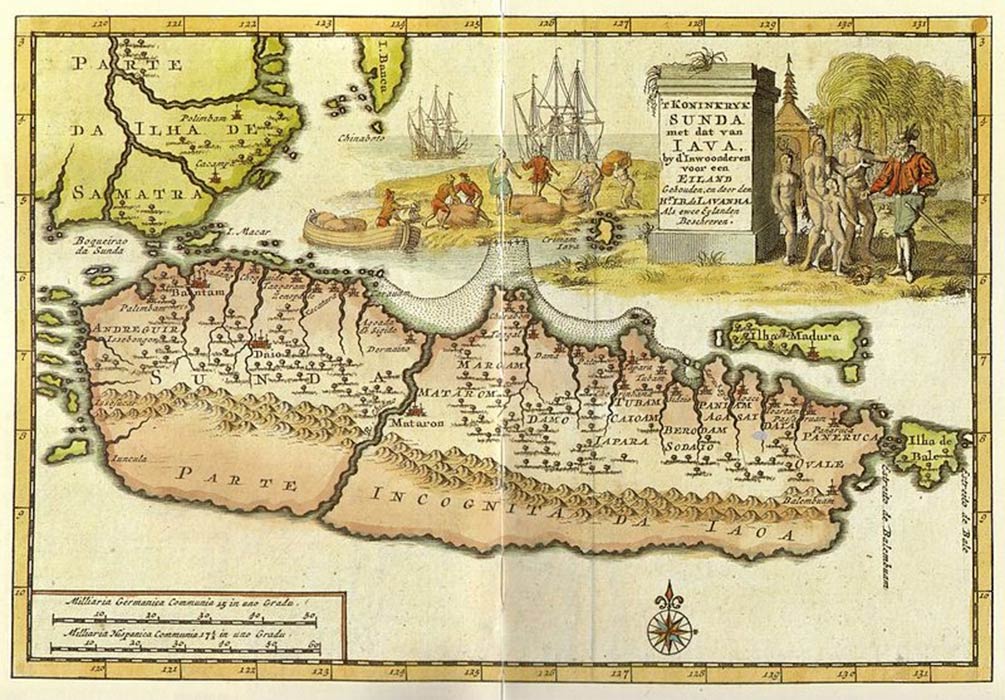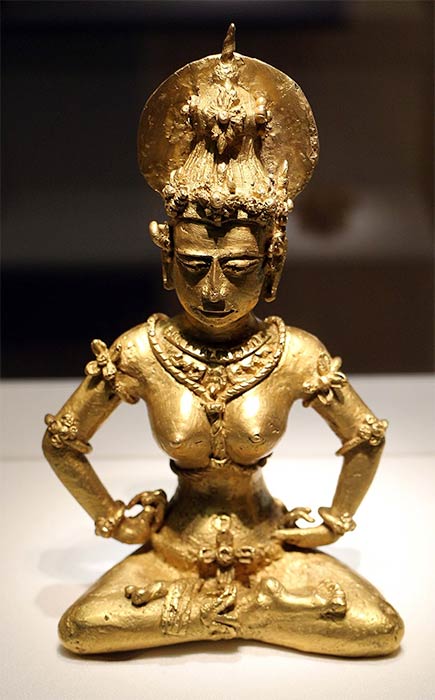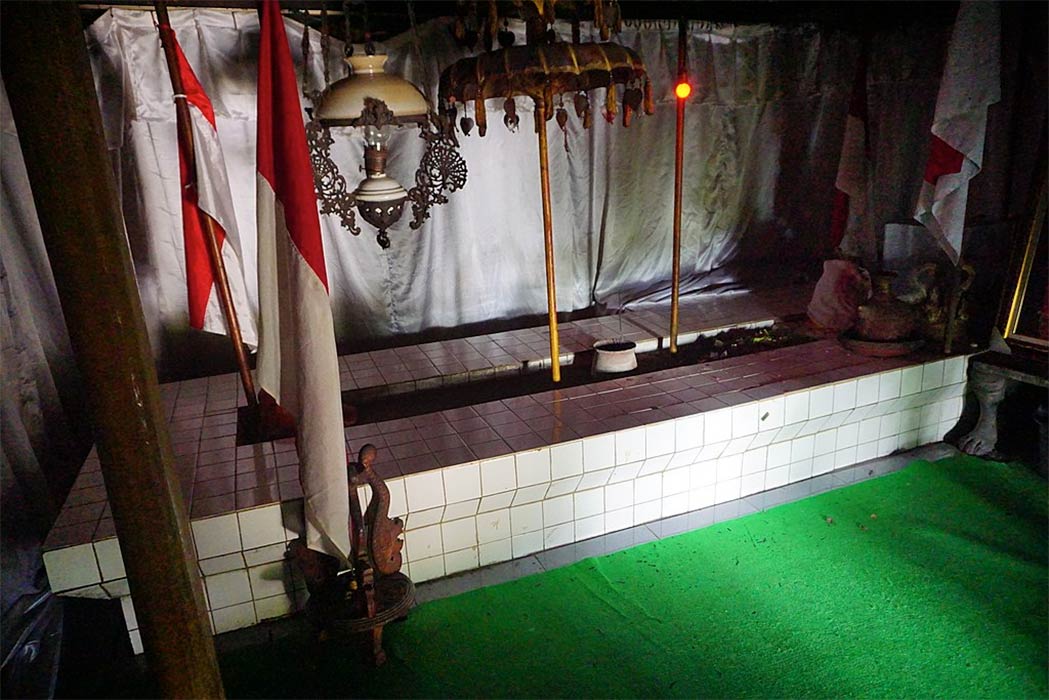
The Bitter Battle of Bubat: Divorcing the Javanese and the Sundanese
The modern-day Java Island of Indonesia now boasts diverse ethnic and religious communities, but the island was once divided by the bitter Battle of Bubat, when a royal wedding turned into a blood bath. The island is traditionally dominated by two of the nation's largest ethnic groups, the Javanese and the Sundanese, who represent 41 and 15.5 percent of the total population of Indonesia respectively. Many Javanese settle in the central and eastern part of Java, while the western part of Java is known as the Sundanese-dominated Tanah Sunda (Sunda's land). Although they share the same island, the Sundanese have a different language, traditional writing system and culture from the Javanese.

Old map of Java showing the land of Sunda in the west, separated from the rest of Java island. Here the capital of Sunda is called Daio which refer to Dayeuh Pakuan Pajajaran (Public Domain)
The Over Ambitious Prime Minister
The Majapahit Kingdom, which existed in Southeast Asia from 1293 until about 1517, was a thalassocratic Javanese Hindu-Buddhist kingdom. During the era of King Hayam Wuruk who ruled from 1350 to 1389, the kingdom reached its pinnacle of prominence, as his reign was characterized by conquests that spread across Southeast Asia. Hayam Wuruk’s achievements is also attributed to his prime minister, Gajah Mada. The Pararaton (The Book of Kings) records that during his inauguration ceremony as the prime minister of Majapahit in 1334, Gajah Mada famously took an oath not to consume any spiced food until he had conquered the entire archipelago. He reportedly declared: “Lamun huwus kalah nusantara isun amukti palapa, lamun kalah ring Gurun, ring Seran, Tañjung Pura, ring Haru, ring Pahang, Dompo, ring Bali, Sunda, Palembang, Tumasik, samana isun amukti palapa” (“If I succeed in defeating Nusantara (Archipelago), then I will break my fast. If Gurun, Seram, Tanjung Pura, Haru, Pahang, Dompo, Bali, Sunda, Palembang, Tumasik, are all defeated, then I will break my fast”).

21-karat Majapahit period gold image discovered in Agusan, Philippines, copied Nganjuk bronze images of the early Majapahit period signifies the Majapahit cultural influence on southern Philippines. (Sailko / CC BY-SA 3.0)
In 1357, King Hayam Wuruk proposed marriage to Dyah Pitaloka Citaresmi, a Sundanese princess. Her father Sunda King Lingga Buana gave his blessings and, accompanied by his queen and ministers, he travelled with his daughter to Trowulan, the capital of Majapahit, for her marriage to Majapahit 's king. As the Sunda king arrived in Majapahit, they were welcomed by none other than Gajah Mada himself. However, Gajah Mada unleashed the force of the Majapahit army on the small entourage. The greatly outnumbered Sundanese royal family and their entourage were quickly annihilated. King Lingga Buana was slain in battle and Princess Dyah Pitaloka and the wives of the slain noblemen committed suicide. This battle is then known as the Perang Bubat (‘Battle of Bubat’), named after the Bubat square where the battle took place.

Interior of the tomb of King Hayum Wuruk, Petilasan Hayam Wuruk (CC BY-SA 2.0)
The mighty kingdom of Majapahit fell in the 16th century. In 1364, just seven years after the Battle of Bubat, Gajah Mada died in relative obscurity, possibly due to an illness. However, the resentment between the Javanese and the Sundanese persisted for hundreds of years after the battle. From this tragedy emerged a tradition which forbade marriage between a Sundanese and a Javanese as it would only bring misery to the couple. A more contemporary example of the feud is that until 2018 there was no street name bearing the name ‘Gajah Mada’ or ‘Majapahit’ in Bandung, West Java, the cultural center of the Sundanese people. Likewise, there was no street bearing the names of ‘Siliwangi’ or ‘Sunda’ in Surabaya and Yogyakarta, major cities with a predominantly Javanese population. This changed in 2018, when the Governors of East and West Java, as well as the Governor of Yogyakarta (Central Java) held the Sunda-Java Cultural Harmony Political Reconciliation to end the post-Bubat issue by renaming the Surabaya, Yogyakarta and Bandung arterial routes.




